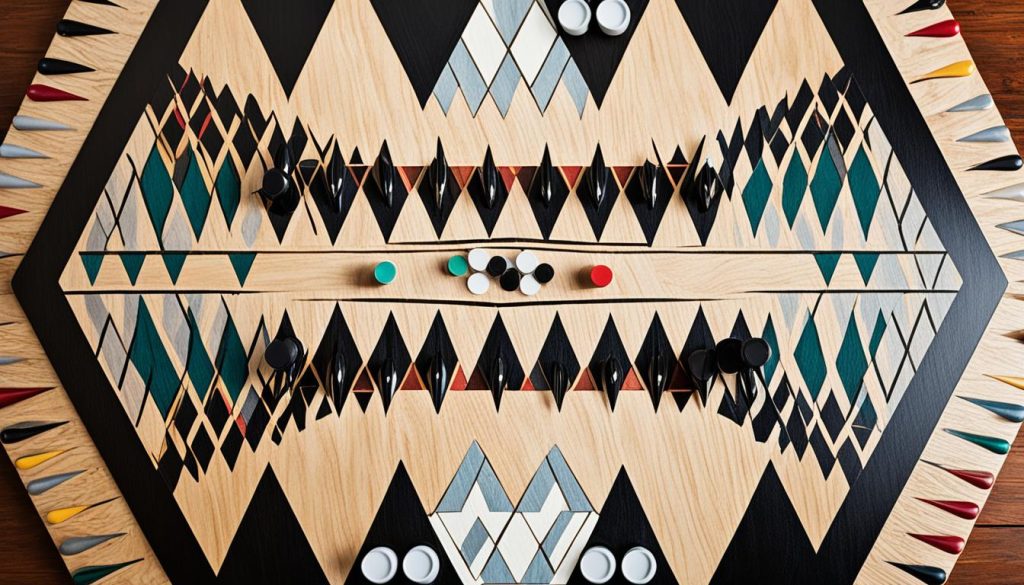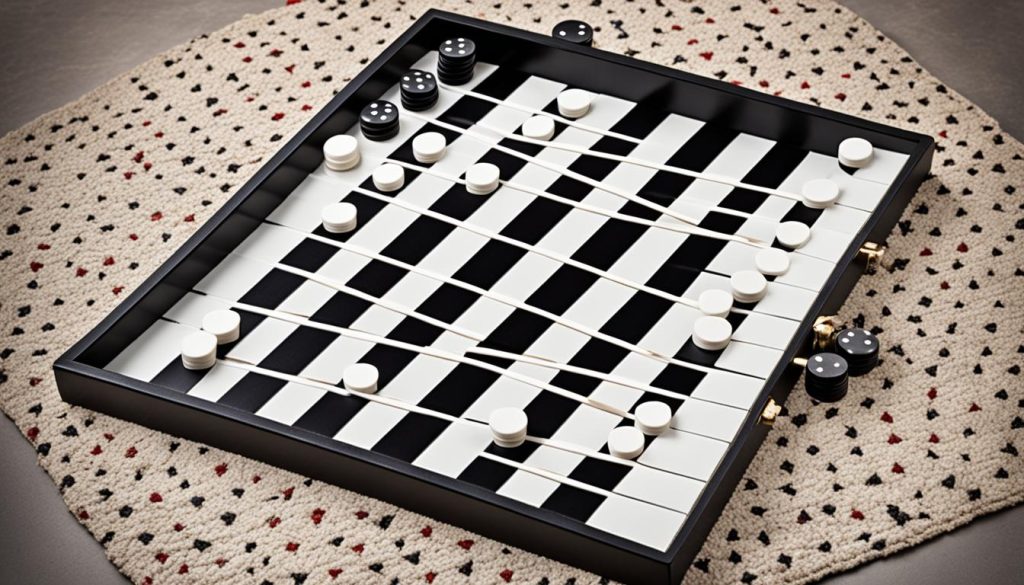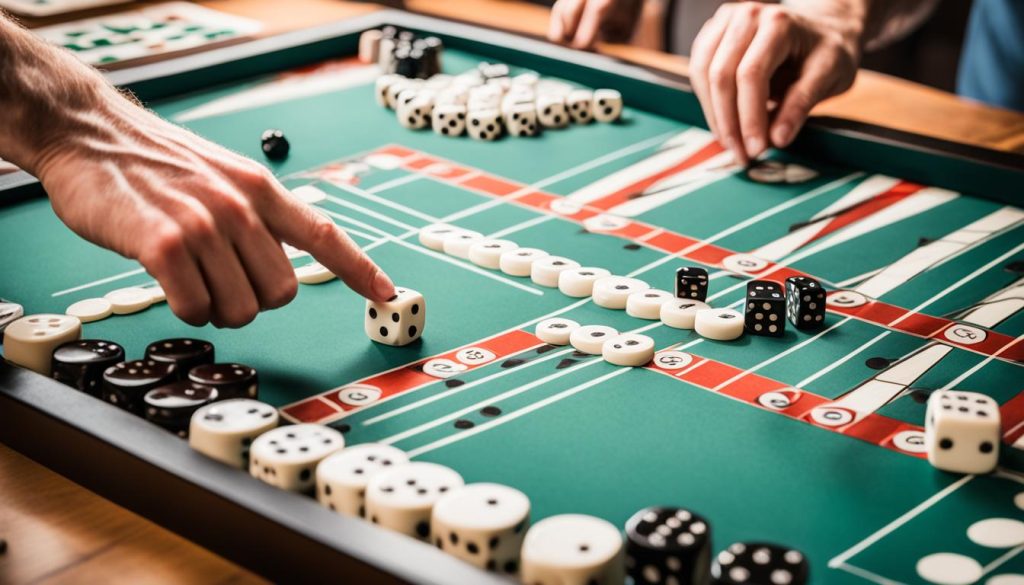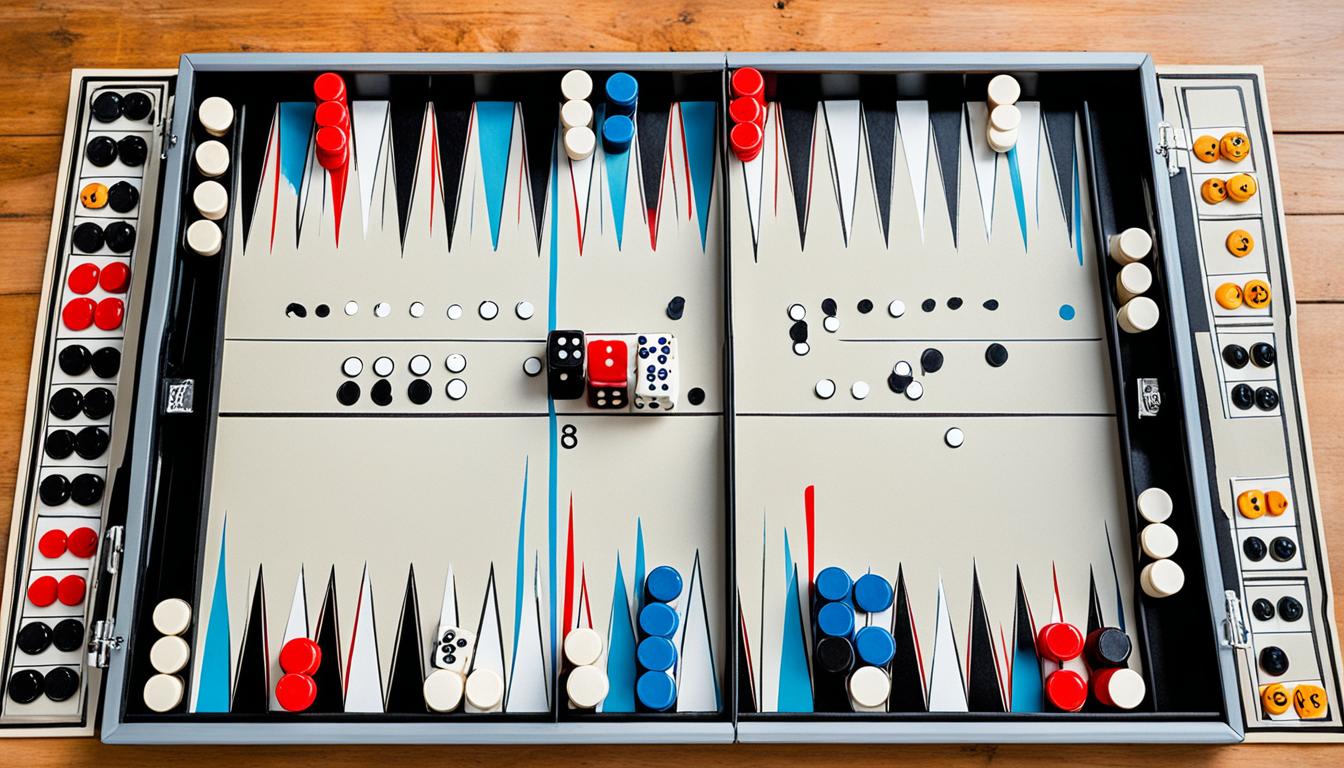Backgammon is a fascinating game that has been played for thousands of years. It combines strategy, luck, and skill, making it an engaging and challenging board game. In this beginner’s guide, we will walk you through the basics of how to play backgammon, including the rules, setup, and gameplay. Whether you’re a complete beginner or looking to brush up on your skills, this guide will provide you with all the information you need to start playing backgammon confidently.
The History of Backgammon
Backgammon is one of the oldest board games in existence, dating back around 5,000 years. It originated in Mesopotamia, which is modern-day Iraq. The game has a rich history and has been played in various cultures throughout the centuries. In ancient times, backgammon was known as “senet” and was played by the ancient Egyptians. The Greeks and Romans also had their versions of the game, known as “tavli” and “tabula” respectively.
Backgammon gained prominence in the Islamic Golden Age and spread across the Middle East, where it became a popular game among nobles and intellectuals. The game’s popularity continued to grow, reaching Europe during the Crusades. It was during this time that backgammon acquired its modern name.
During the 18th and 19th centuries, backgammon became a prominent game in European coffeehouses, where it was played by intellectuals and gamblers alike. The game’s strategic elements and gambling appeal made it a favorite pastime for many.
The introduction of the doubling cube in the 1920s added a gambling element to backgammon, increasing its appeal and adding a new level of strategy to the game. The doubling cube allows players to increase the stakes and introduces an element of risk and reward. This innovation further fueled the popularity of backgammon and solidified its place as one of the most beloved board games.
In the 1970s, backgammon experienced a resurgence in popularity, particularly in the Middle East and the Western world. The advent of computer technology made it possible to play backgammon electronically, further expanding its reach and accessibility. Today, backgammon continues to be enjoyed by millions of players worldwide, both in physical and virtual forms.

Key Highlights from the History of Backgammon
| Year | Event |
|---|---|
| 3000 BC | Backgammon-like game “senet” played in ancient Egypt |
| 1st Century AD | Greeks play “tavli,” their version of backgammon |
| 5th Century AD | Romans play “tabula,” their version of backgammon |
| 11th Century | Backgammon spread to Europe during the Crusades |
| 18th-19th Century | Backgammon played in European coffeehouses |
| 1920s | Introduction of the doubling cube adds a gambling element |
| 1970s | Resurgence of backgammon’s popularity worldwide |
Setting Up the Backgammon Board
The backgammon board consists of 24 narrow triangles called points, which are grouped into four quadrants. Each player has 15 checkers of different colors, which they place on the board according to a specific setup. The setup involves placing the checkers on certain points in each player’s home and outer boards. The board is divided by a ridge called the bar, which separates the home and outer boards. Understanding the setup of the backgammon board is crucial before starting to play the game.
The Backgammon Board
The backgammon board is a rectangular playing surface with twelve points on each side of the board, making a total of 24 points. These points are arranged in a mirror image, with the two sides referred to as the home board and the outer board. The home board is the innermost quadrant of the board, while the outer board is the outermost quadrant. The players sit opposite each other, with their home boards on the right side and their outer boards on the left side.
Layout and Setup
At the beginning of the game, the board setup is as follows:
| Points | Player 1 | Player 2 |
|---|---|---|
| 1 | Two checkers | |
| 2 | Two checkers | |
| 3 | ||
| 4 | ||
| 5 | ||
| 6 | Five checkers | Five checkers |
| 7 | ||
| 8 | Three checkers | Three checkers |
| 9 | ||
| 10 | ||
| 11 | Two checkers | |
| 12 | Two checkers |
Player 1’s home board is points 1-6, while Player 2’s home board is points 19-24. The outer board for Player 1 is points 7-12, and for Player 2, it is points 13-18. The checkers are moved around the board in a counter-clockwise direction for Player 1 and in a clockwise direction for Player 2.

By setting up the backgammon board correctly, players can ensure a fair and strategic game. Understanding the points, quadrants, and the placement of checkers is crucial for effective gameplay.
How to Play Backgammon?
Playing backgammon involves a combination of strategy and luck. Each player takes turns rolling dice and moving their checkers around the board. The movement of the checkers is determined by the numbers shown on the dice. Players must strategically position their checkers to block their opponent’s progress and hit their opponent’s checkers. The ultimate goal is to bear off all the checkers from the board first. Understanding the rules and gameplay of backgammon is essential to play the game successfully.
Backgammon Rules
Before diving into gameplay, it’s important to familiarize yourself with the basic backgammon rules. The game is played on a board divided into 24 points or triangles. Each player has 15 checkers of different colors. The checkers move in opposite directions, with one player’s checkers moving clockwise and the other player’s checkers moving counterclockwise. The movement of the checkers is determined by the roll of two dice. Players must use their dice rolls to move their checkers forward and strategically position them to block their opponent’s progress.
Backgammon Gameplay
The gameplay in backgammon revolves around the movement of the checkers and the strategies employed by the players. Each turn, a player rolls two dice and moves their checkers accordingly. The numbers shown on the dice represent the number of points the player can move their checkers. For example, if a player rolls a four and a two, they can move one checker four points and another checker two points. The movement can be split between different checkers or used to move a single checker, depending on the player’s strategy.
During the game, it’s crucial to strategically position your checkers to block your opponent’s checkers and hit them. When a player’s checker lands on a point occupied by a single opponent’s checker, the opponent’s checker is hit and placed on the bar. The bar acts as a barrier that the opponent’s hit checker must re-enter the game from before any other checkers can be moved. Hitting your opponent’s checkers can disrupt their strategy and give you an advantage.
Bearing Off
The final stage of the game is bearing off. Once a player has moved all their checkers to their home board (the innermost quarter of the board), they can start bearing off their checkers. Bearing off involves moving the checkers from the points onto the player’s outer board and eventually off the board. The number rolled on the dice determines the number of points a player can bear off their checkers. The first player to bear off all their checkers wins the game.
Now that you have a good understanding of the backgammon rules, gameplay, and strategies, you’re ready to start playing and enjoy the excitement of this ancient game.
Advanced Backgammon Strategies
Once you have a good understanding of the basic rules and gameplay of backgammon, you can begin to explore advanced strategies and tactics to take your game to the next level. These strategies involve strategic moves, effective utilization of the doubling cube, and careful planning of your moves in advance. By implementing these advanced backgammon strategies, you can significantly improve your chances of victory against skilled opponents.
Strategic Moves
A key aspect of backgammon strategy is making strategic moves with your checkers to gain an advantage over your opponent. This involves positioning your checkers strategically to block your opponent’s progress and create opportunities for yourself. Consider the following strategic moves:
- Blockades: Position your checkers to form a blockade, preventing your opponent’s checkers from moving past them.
- Hit and Run: Safely hit your opponent’s checkers and immediately move your checkers to a safer position, minimizing the risk of retaliation.
- Splitting: Divide your forces by splitting your checkers across different points, making it harder for your opponent to attack or block your checkers.
Utilizing the Doubling Cube
The doubling cube is a key element in backgammon that allows players to increase the stakes of the game. Understanding how to use the doubling cube effectively can give you an advantage and put pressure on your opponent. Consider these tactics when utilizing the doubling cube:
- Timing is Key: Choose the opportune moment to offer a double, when you have a strong position or believe your chances of winning the game have improved.
- Accept or Decline: Evaluate the current game state before accepting or declining a double. Consider factors such as the position of your checkers, your potential to hit your opponent’s checkers, and your chances of bearing off your checkers.
Planning Your Moves
Planning your moves in advance is essential for success in backgammon. Consider these tips for effective move planning:
- Anticipate Your Opponent’s Moves: Study your opponent’s potential moves and plan your own moves accordingly to counter their strategies.
- Think Ahead: Consider multiple moves ahead to anticipate different scenarios and plan your moves accordingly.
- Flexible Strategy: Be adaptable in your strategy and willing to adjust your plans based on the changing dynamics of the game.
Remember, while these advanced strategies can enhance your gameplay, it’s important to start with simpler strategies and gradually progress to more complex tactics as you gain experience and confidence. Practice, analysis, and learning from each game will help you refine your skills and become a formidable backgammon player.

Backgammon Tips for Beginners
If you’re new to backgammon, it can be helpful to start with some beginner tips to get you started on the right track. By following these tips, you can improve your understanding of the game, develop your skills, and increase your chances of success.
Study the Basic Rules
- Take the time to familiarize yourself with the basic rules of backgammon. Understand how the checkers move, how to bear off, and the concept of hitting your opponent’s checkers.
- Beginner backgammon tips: Having a solid grasp of the rules is crucial for your overall gameplay strategy.
Practice with Online Tutorials or Apps
- Make use of online tutorials or backgammon apps that provide interactive learning experiences. These resources can help you practice different moves, strategies, and improve your overall gameplay.
- **Backgammon tips**: Utilizing online tutorials or apps is an effective way to enhance your skills and build confidence in your decision-making.
Join Backgammon Communities or Clubs
- Connect with other backgammon enthusiasts by joining online communities or local backgammon clubs. These platforms provide opportunities to learn from experienced players, participate in tournaments, and engage in friendly matches.
- **Backgammon tips**: Engaging with a community of players allows you to share knowledge, gain insights, and improve your gameplay through friendly competition.
Analyze Your Own Gameplay
- After playing a game, take the time to review and analyze your moves. Identify areas where you could have made better decisions or missed opportunities. This self-reflection can help you learn from your mistakes and make more strategic moves in the future.
- **Backgammon tips**: Regularly analyzing your own gameplay is a key component of improving your skills and becoming a more proficient backgammon player.
Remember, practice makes perfect. Be patient, keep honing your skills, and enjoy the journey of learning and mastering backgammon.

Conclusion
Backgammon is an ancient and captivating game that offers a unique blend of strategy and luck. Whether you’re a beginner or an experienced player, learning how to play backgammon can provide hours of entertainment and challenge. By understanding the rules, practicing different strategies, and honing your skills, you can become a skilled backgammon player.
So gather your friends or family, set up the backgammon board, and enjoy the exciting world of backgammon. With each move, you’ll experience the thrill of making strategic decisions and the anticipation of the dice rolls. The game’s combination of luck and skill keeps players engaged and coming back for more. Whether you’re playing casually with loved ones or competing in backgammon tournaments, backgammon offers a rewarding and enjoyable experience for players of all levels.
So what are you waiting for? Dive into the world of backgammon and discover the fun that awaits. With its rich history, challenging gameplay, and endless strategic possibilities, backgammon is a game that has stood the test of time. Whether you’re aiming to sharpen your cognitive skills or simply looking for a way to unwind, backgammon has something to offer everyone. So gather your checkers, roll the dice, and embark on an exciting journey into the world of backgammon.
FAQs
What is backgammon?
Backgammon is a fascinating board game that combines strategy, luck, and skill. It has been played for thousands of years and is enjoyed by players around the world.
How long has backgammon been played?
Backgammon is one of the oldest board games in existence, dating back around 5,000 years.
Any tips for beginners?
Some useful tips for beginners include studying the basic rules, practicing with online tutorials or apps, and joining backgammon communities or clubs.
Why should I play backgammon?
Backgammon offers a unique blend of strategy and luck, providing hours of entertainment and challenge. It’s a game that has stood the test of time and can be enjoyed by both beginners and experienced players.

